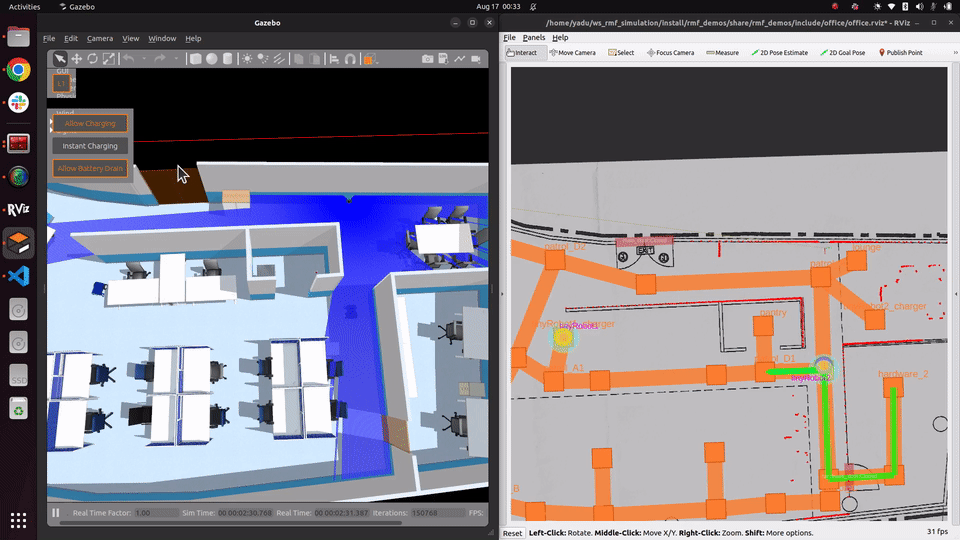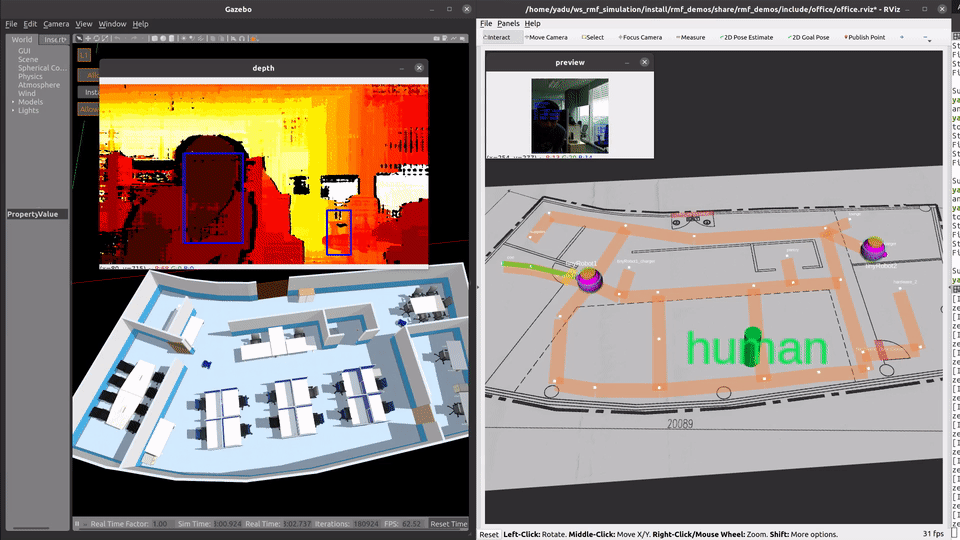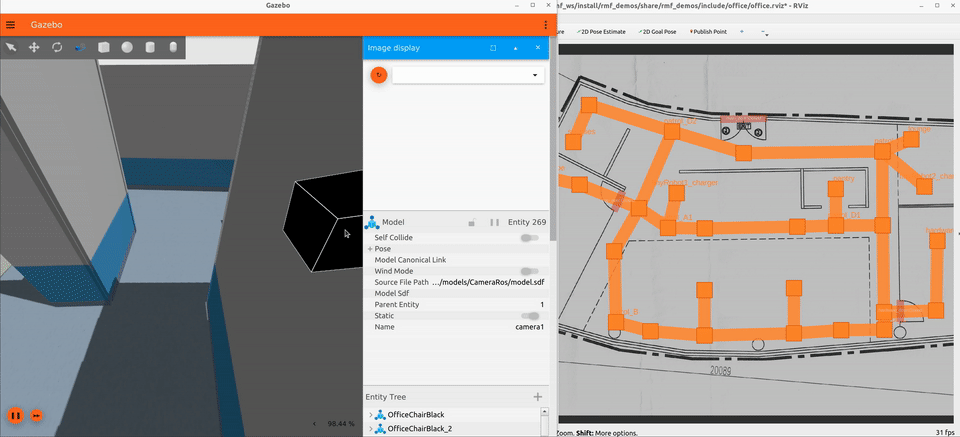Packages that infer and react to the presence of obstacles from sensor inputs.
A ROS 2 node that subscribes to LaserScan messages and publishes obstacles to /rmf_obstacles.
The node is implemented as an rclcpp::lifecycle_node node where upon activation, it calibrates the surroundings based on the range values in the initial few LaserScan messages.
This essentially becomes the "obstacle-free" configuration.
Subsequently, any changes to the surroundings are detected as an obstacle.
To run
ros2 run rmf_obstacle_detector_laserscan laserscan_detector
To configure and Activate
#to configure
ros2 lifecycle set /laserscan_obstacle_detector configure
#to activate
ros2 lifecycle set /laserscan_obstacle_detector activate
Note: The node can also be loaded into a ROS 2 component container as a plugin (
LaserscanDetector)
The node accepts the following parameters
| Parameter Name | Description | Default Value |
|---|---|---|
scan_topic_name |
The topic over which LaserScan messages are published. It is strongly recommended to filter the scan to remove out-of-range rays before passing it to this node. |
/lidar/scan |
range_threshold |
For each ray, if the difference in range measurement between the latest LaserScan and the calibrated one is greater than this value, a new obstacle is assumed. |
1.0 meter |
min_obstacle_size |
The minimum perceived size of an object to be considered an obstacle. | 0.75 meter |
level_name |
The level(floor) name on which the scanner exists. | L1 |
calibration_sample_count |
The number of initial LaserScan messages to cailbrate the "obstacle-free" configuration. |
10 |
A ROS 2 node that detects humans via on-chip-inference on OAK-D cameras and publishes the detections over /rmf_obstacles as rmf_obstacle_msgs::Obstacles message.
The node can be run either as a component within a ROS 2 container or as a standalone node.
The component plugin is rmf_human_detector_oakd::HumanDetector and can be loaded into a ComponentManager via ros2 component load <COMPONENT_MANAGER> rmf_human_detector_oakd::HumanDetector.
To launch as a standalone node,
ros2 launch rmf_human_detector_oakd human_detection.launch.xml blob_path:=<PATH_TO_MOBILENET-SSD_BLOB>The node has several configurable parameters documented in the launch file.
The most important is blob_path as it holds the absolute path to the NN model for inference. See depthai documentation for more information on how the various pre-trained models can be obtained.
It is recommended to use the blobconverter tool to obtain the mobilenet-ssd_openvino_2021.4_6shave.blob blob for inference.
To visualize the detection frames, set debug:=True. Note: Frames will only be visualized when a human is actively detected.
For more information on setup and troubleshooting see here
A ROS 2 node that subscribes to sensor_msgs::Image messages published by a monocular camera and runs Yolo-V4 to detect the presence of humans. The relative pose of the humans with respect to the camera frame is estimated based on heuristics that can be configured through ROS 2 params.
The use case for this node would be to detect crowds from existing CCTV cameras or vision sensors in the facility.
To run:
ros2 launch rmf_human_detector human_detector_launch.pyThe rmf_obstacle_ros2 package contains ROS 2 nodes that react to the presence of obstacles.
At present the lane_blocker_node is available which subscribes to /rmf_obstacles, and checks whether
any of the obstacles intersect with any of the lanes across fleet navigation graphs.
If a new intersection is determined, the lanes for the corresponding fleets are closed. Previously closed lanes are also opened once the obstacles no longer intersect with the lanes.
To run:
ros2 run rmf_obstacle_ros2 lane_blocker_node

